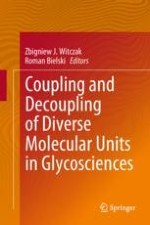2018 | OriginalPaper | Chapter
Masking Strategies for the Bioorthogonal Release of Anticancer Glycosides
Authors : Belén Rubio-Ruiz, Thomas L. Bray, Ana M. López-Pérez, Asier Unciti-Broceta
Published in: Coupling and Decoupling of Diverse Molecular Units in Glycosciences
Publisher: Springer International Publishing
Activate our intelligent search to find suitable subject content or patents.
Select sections of text to find matching patents with Artificial Intelligence. powered by
Select sections of text to find additional relevant content using AI-assisted search. powered by
